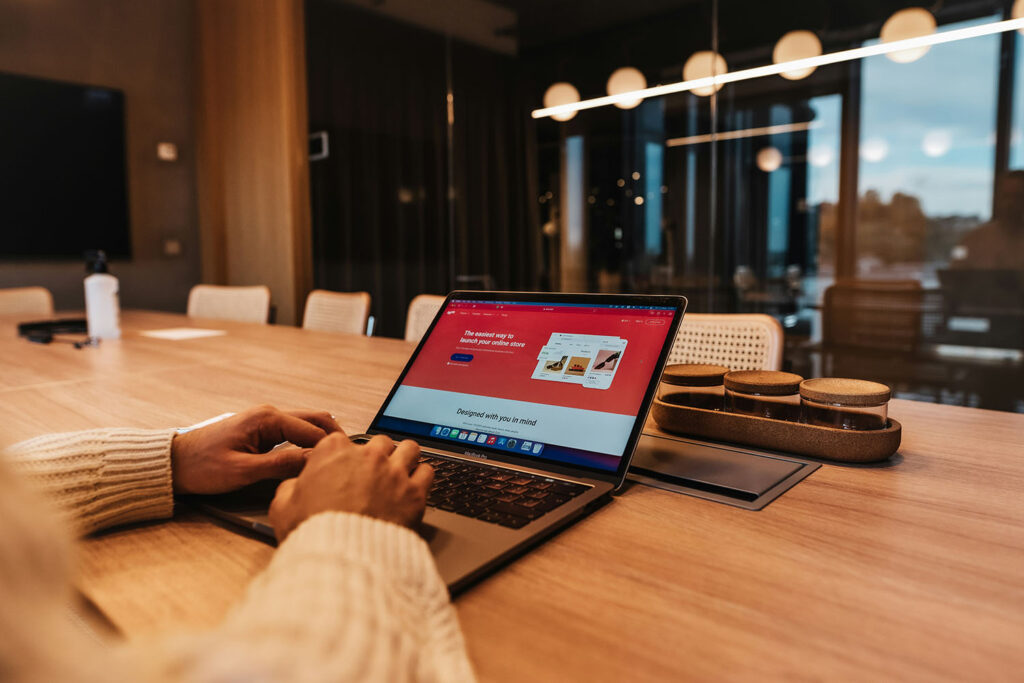The primary difference between a landing page and a website lies in their purpose, structure, and content. Here’s a breakdown:
1. Purpose:
- Landing Page:
- A landing page is highly focused on a single, specific objective, such as generating leads, encouraging sign-ups, promoting a product, or driving sales.
- It is often part of a marketing campaign and designed to guide users toward completing one action, like filling out a form or clicking a call-to-action (CTA) button.
- Website:
- A website is more comprehensive and serves multiple purposes. It provides detailed information about a brand, its products or services, history, and much more.
- A website typically includes multiple pages (home, about, services, contact, blog, etc.) and is designed for users to explore and learn more about the company.
2. Structure:
- Landing Page:
- A landing page usually consists of a single page with no additional navigation to other pages. It is meant to keep visitors focused on the core action without distractions.
- It includes concise, targeted content, with a strong CTA (e.g., “Sign up,” “Buy Now”) and is optimized for high conversions.
- Website:
- A website consists of multiple interconnected pages that provide comprehensive information and services. It includes a navigation menu, allowing users to explore different sections (e.g., homepage, product page, FAQ, blog).
- A website caters to users at different stages of their journey, from learning about the company to purchasing products or contacting customer support.
3. Content:
- Landing Page:
- Content on a landing page is specific and minimal. It focuses on a single message or offer and provides only the most relevant information to convince the user to take action.
- It usually includes headlines, brief text, images, a CTA, testimonials, or social proof, but does not overwhelm the user with excess information.
- Website:
- A website contains more varied and extensive content. It includes detailed descriptions of products or services, blogs, case studies, portfolio sections, company information, etc.
- Websites are often more content-rich and are used as a resource for users seeking a broader understanding of the business.
4. Traffic Source:
- Landing Page:
- Traffic is often driven to a landing page through specific marketing campaigns, such as Google ads, email marketing, or social media ads.
- The landing page is not necessarily part of the website’s main navigation but is created as a stand-alone page for a targeted audience.
- Website:
- Traffic to a website comes from various organic and paid sources, including search engines, direct visits, referrals, or marketing campaigns.
- Websites are usually meant to establish an online presence and provide ongoing access to information about the company and its offerings.
5. Time of Use:
- Landing Page:
- A landing page is often temporary or campaign-specific, designed for limited-time promotions, product launches, or events.
- It may be taken down after the campaign ends.
- Website:
- A website is permanent and serves as the company’s main digital presence. It is regularly updated and maintained over time to reflect changes in the business, services, or market.
Summary:
- Landing Page: Focused, single-purpose, minimal content, optimized for conversions, part of a marketing campaign.
- Website: Comprehensive, multi-page, varied content, provides detailed information, serves as a long-term online presence.
In short, a landing page is specialized and action-oriented, while a website is broader, offering a full range of information and resources.
| Aspect | Landing Page | Website |
|---|---|---|
| Purpose | Focused on a single objective (e.g., conversions, sign-ups) | Serves multiple purposes, like providing information, selling products, and building brand presence |
| Structure | Typically a single page with no navigation | Multi-page structure with a navigation menu |
| Content | Minimal, targeted content with a strong call-to-action | Comprehensive content across various pages |
| Traffic Source | Driven by specific marketing campaigns (ads, emails) | Attracts traffic from multiple sources (SEO, direct, referrals) |
| Time of Use | Often temporary, campaign-specific | Permanent, regularly updated |
| User Journey | Directs users toward one specific action | Supports users through various stages of the journey (exploration, purchase, contact) |
| SEO Impact | Typically less focused on broad SEO, more on conversions | SEO-optimized across multiple pages for better visibility |
| Examples | Event sign-up page, product launch page | Company homepage, service overview, blog |

